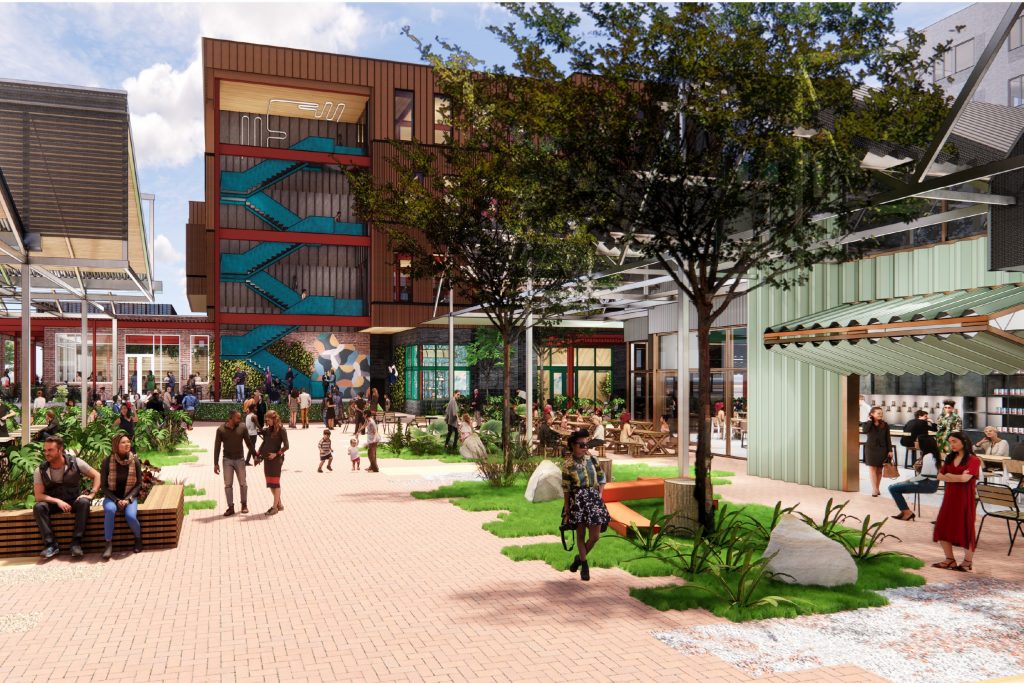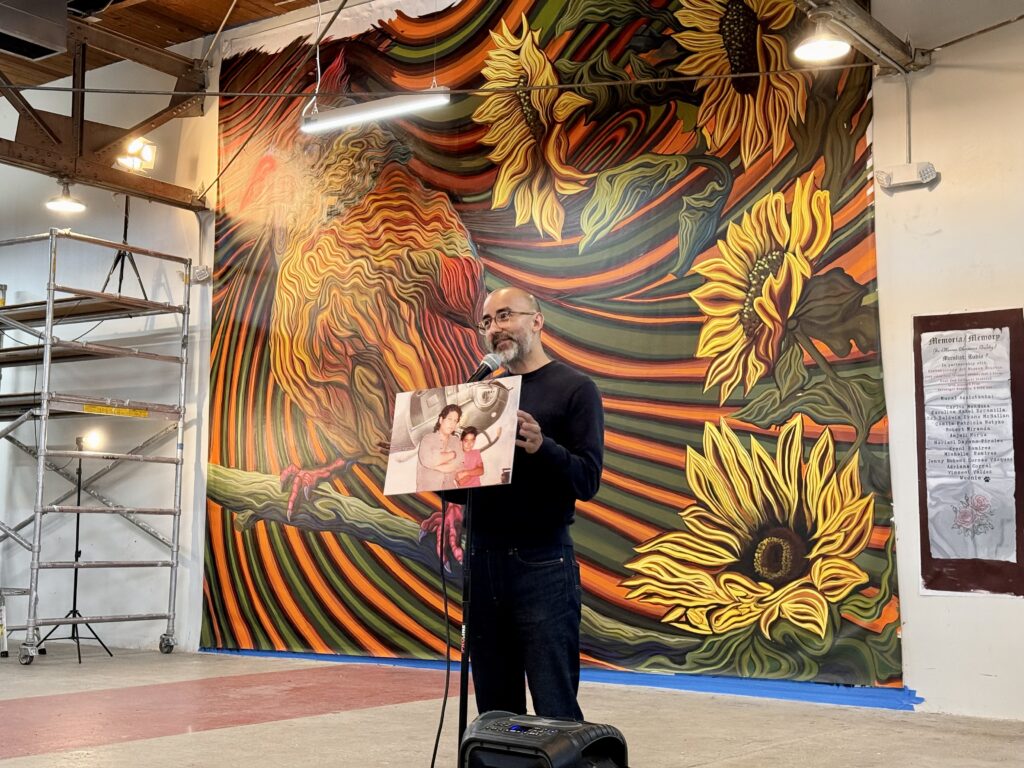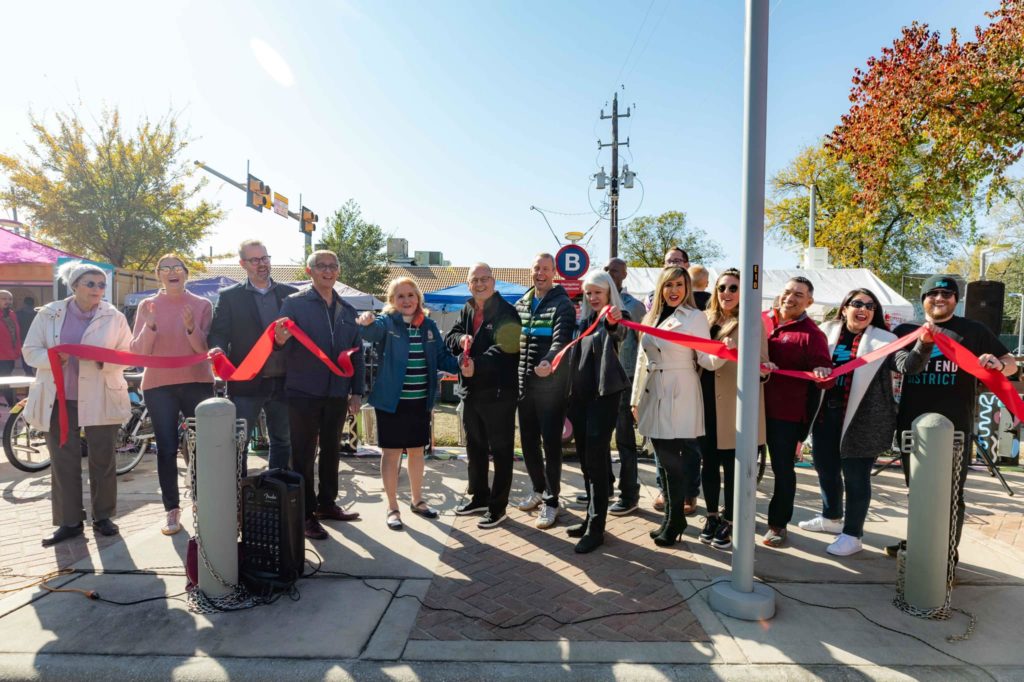This article by Marissa Luck originally appeared on CoStar News.
Houston’s East End is peppered with fields between former industrial brick buildings, bungalows, recently remodeled parks, farmers markets and new condominiums, but a 6-acre lot stands out. Behind purple fencing, the parcel marks two construction trends spreading across the country: adaptive reuse of buildings and the use of timber in commercial projects.
The site at the moment houses a pop-up drive-in movie theater, but Houston developer Triten Real Estate Partners plans to turn the lot into a mixed-use project that is expected to be a critical part of the East End’s ongoing transformation. Called the Mill after a former 1890s-era industrial lumber mill on the site, Triten’s project is expected to be one of Houston’s first cross-laminated timber office projects, in addition to restaurant and retail space and a 340-unit apartment complex.
U.S. developers have begun turning to wood development in recent years, with timber serving as a lower-carbon alternative to steel and concrete while still providing structural integrity and fire resistance. As reuse projects tout their adapting and recycling of buildings, the use of timber is also increasing.
Mass timber projects can be built faster and with less on-site labor. Construction of the first mass timber projects in major cities is either underway or recently completed in Baltimore, Maryland; Washington, D.C.; Portland, Oregon; Atlanta, Georgia; and Cleveland, Ohio.
In the case of the Mill, timber helps build upon the historic industrial character of the neighborhood. The shrinking of industrial use within major U.S. cities in the past 100 years has led to old buildings getting reused, particularly in the past decade, by service or technology companies. As a case in point, the Houston East End project is planned to have 75,000 square feet of office space, along with 25,000 square feet of restaurant space, in mid-rises.
Like Fulton Market in Chicago, Deep Ellum in Dallas or East Austin in the Texas state capital city, the East End is sparking hope among proponents that the area will be a model nationally for how to turn a traditionally industrialized area into a sustainable, urban district while maintaining its historic character.
And like the use of timber, the development of the Houston neighborhood provides an inside look at the latest techniques in adaptive reuse. Two blocks away from the Mill, developer Ancorian recently wrapped up an adaptive reuse of industrial buildings turned into a coworking outlet for Common Desk and an arcade, restaurant and winery called Cidercade. And farther east on Navigation Boulevard, Urban Partnerships Community Development Corp. is nearing completion on an adaptive reuse of industrial buildings transformed into the East End Maker Hub, a startup incubator.
Downtown Gateways
Along with other revitalization projects in U.S. cities, the development area marks one major entrance from a neighborhood into the downtown. In this case, it’s connecting the East End from downtown Houston, adding to the proposed projects in the district, a 16-square-mile area bound by Clinton Drive north of the bayou and extending south of the bayou to the Gulf Freeway. Combined with Midway’s 150-acre East River mixed-use project, the East End Maker Hub and Buffalo Bayou Partnership’s proposed $200 million of improvements to the eastern side of the bayou, the East End is expected to look entirely different and denser within the next decade.
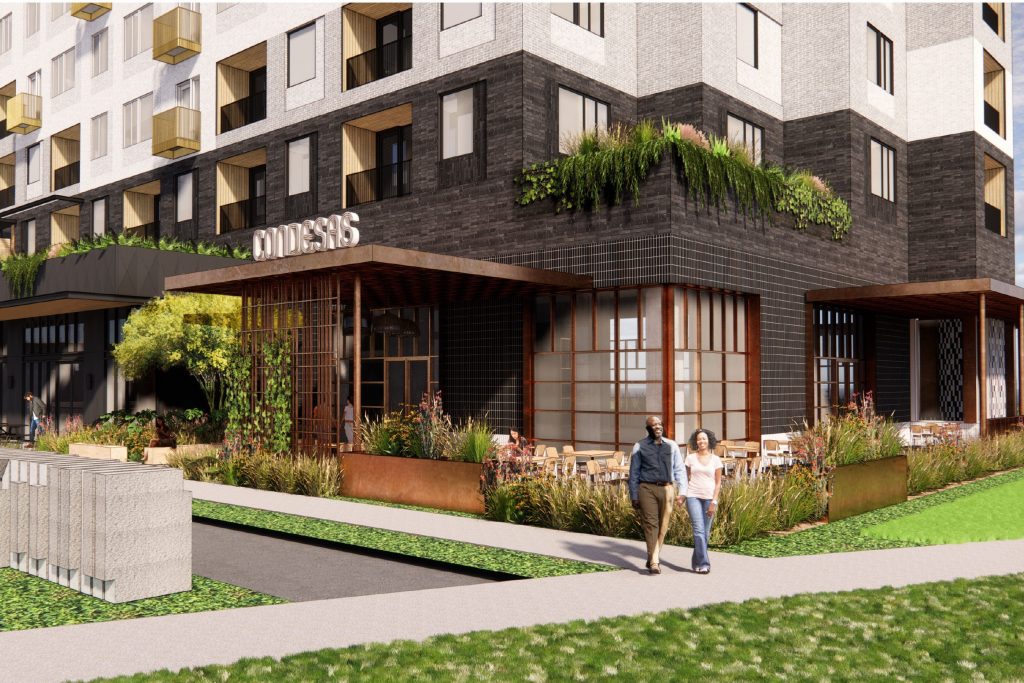
A block away from Triten’s latest new development planned just east of Highway 69 near the intersection of Canal Street and Navigation Boulevard, real estate firm Marquette Cos. is nearing completion on a nine-story apartment project called Forth on Navigation that will also increase the area’s density. A Marquette Cos. spokeswoman said tenants are expected to begin moving in by May.
“In general, Houston is developing these areas that are dense urban nodes,” said Veronica Chapa Gorczynski, president of the East End District, in an interview. “What Triten and Marquette are trying to do differently is leverage an opportunity for the street intersection to become dense with the advantage of investment in the Buffalo Bayou, the surrounding green spaces and activities.”
Triten plans to start construction on the Mill by the fourth quarter or the first quarter of 2022. Triten’s design will be a mix of “Michael Hsu progressiveness but then also embracing that historical industrial past,” said Scott Arnoldy, CEO of Triten, in an interview, referring to the project’s conceptual architect, Michael Hsu Office of Architecture.
Taking a page from the dozens of adaptive reuse projects in the East End, plans for the Mill include an adaptive reuse of a 14,000-square-foot brick building that was used for commercial purposes and recently housed a gallery.
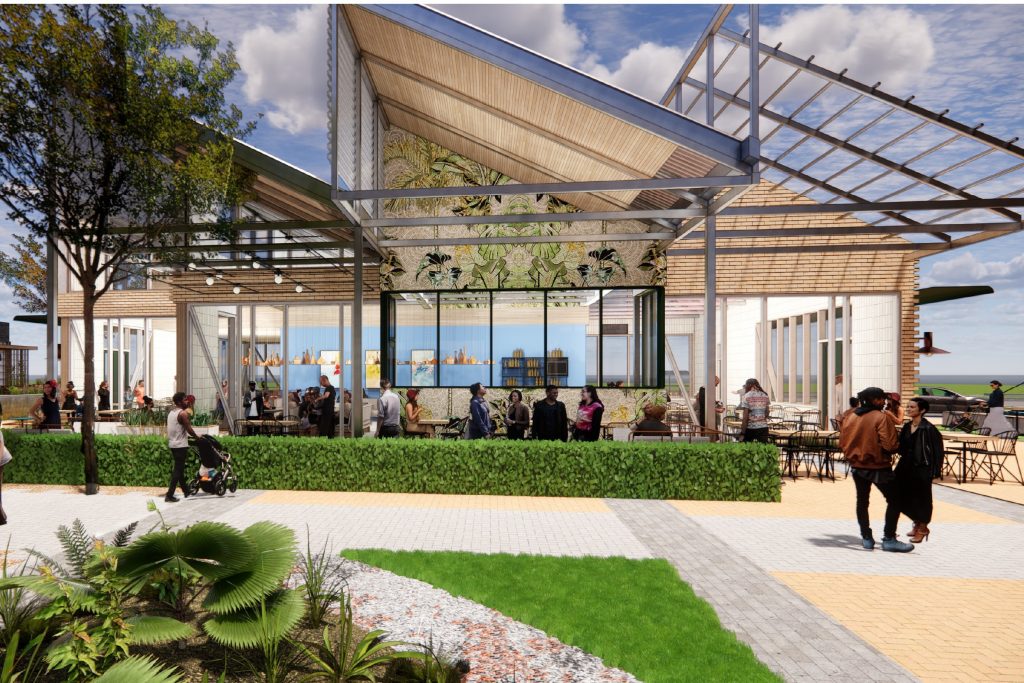
The facade of the existing building will be preserved and incorporated into a 75,000-square-foot, six-story boutique office project. The first floor of the office building will include a so-called maker’s space for small businesses to host workshops and demonstrations. Triten expects to use cross-laminated timber, a relatively rare sustainable building alternative to steel and concrete structures.
On the other end of the bayou near Allen Parkway, real estate firm Local Partners also is proposing a cross-laminated timber project in a mixed-use development called Autry Park planned by Lionstone Investments and Hanover Co.
For the Mill, the industrial vibe is also present in the design of boutique retail buildings, which will incorporate a sawmill-like rooftop as a nod to the former mill on-site. The timing of construction is contingent on restaurant leasing within the 25,000 square feet of retail planned, Arnoldy said.
Arnoldy said Triten is seeking restaurant and bar concepts such as a trendy taco joint, a local eatery, an icehouse – part open-air bar, part convenience store – or a restaurant with a large patio or outdoor seating. He said Triten is in talks with some local restaurant groups, but there are no deals to announce yet. Scoring the right restaurant tenant is critical for the project, Arnoldy said, so Triten is willing to be “aggressive” about its leasing rates and willing to strike partnerships with the right tenants.
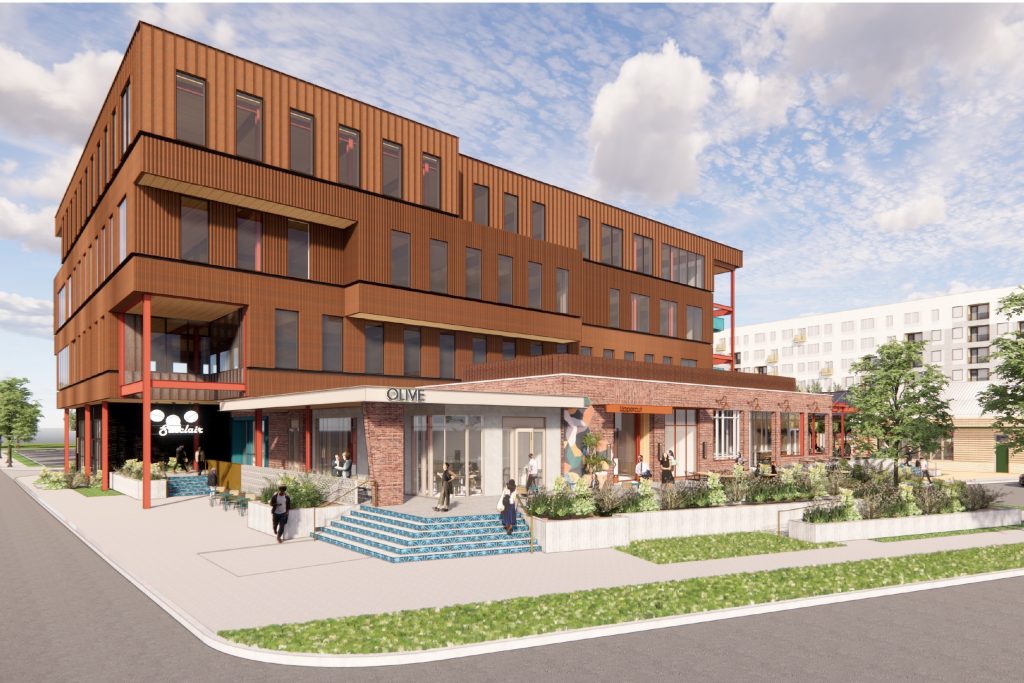
East End Growth
The East End District, known traditionally as the Second Ward, has already seen substantial real estate growth in the past decade in the wake of the expanded MetroRail line and Major League Soccer’s BBVA Stadium opening in the adjacent East Downtown District.
When MetroRail expanded into the East End in 2017, property values on land immediately adjacent to the light rail line along Harrisburg Boulevard shot up 30%, said Chapa Gorczynski, the president of the East End District, citing statistics from the Metropolitan Transit Authority.
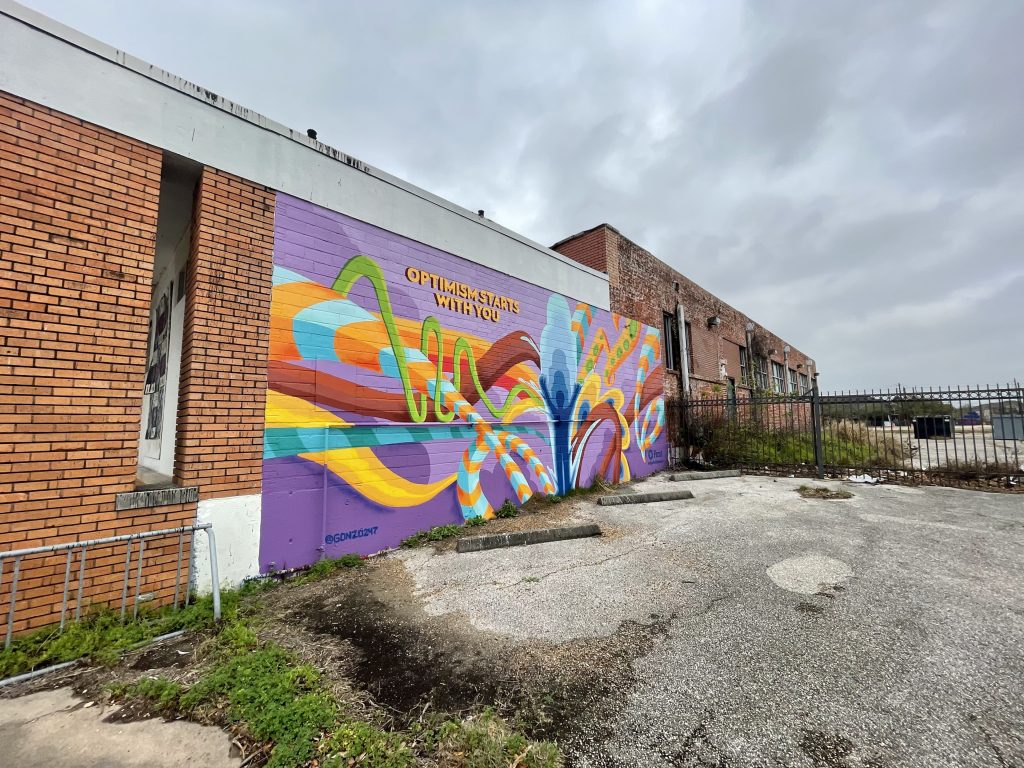
The East End District has invested more than $43 million over the past 20 years into improving the area, including planting hundreds of trees, beautifying several pocket parks, adding bicycle lanes and improving sidewalks. Chapa Gorczynski argues the access to the improved Buffalo Bayou could create a more outdoorsy lifestyle than other growing parts of Houston that have seen similar real estate booms. Midway, for example, is heavily playing off connection to the outdoors to market its 150-acre project, East River, which is expected to break ground this summer.
“I think more people are going to own bikes. They’re going to try to figure out a way to rent a canoe or kayak if they don’t have one,” Chapa Gorczynski said.
Buffalo Bayou Partnership in 2019 unveiled a 20-year master planexpected to transform 4 miles of waterfront land on the bayou and create 263 acres of parks and 40 miles of trails and paths with seven pedestrian bridges. The plan reflects a similar redevelopment of the west end of the bayou, which set off a wave of real estate redevelopment encompassing more than $1.6 billion worth of commercial projects between 2012 to 2019, according to CoStar analysts estimates.
As is the case with similar redevelopments across the United States, as real estate values rise in this part of Houston, there is concern about gentrification, in this case in areas where one-third of households make less than $25,000 annually, according to the U.S. Census Bureau.
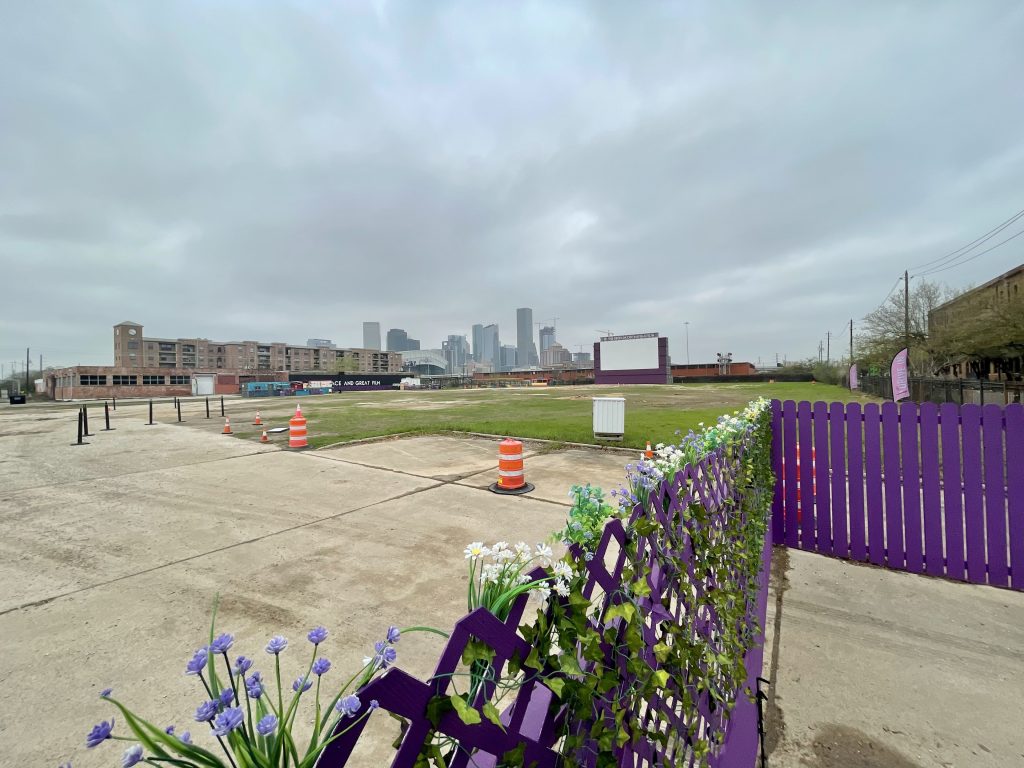
Parts of the East End and East Downtown encompassing the 77003 ZIP code ranked third on a national list of the “most gentrified neighborhoods” complied by RentCafe in 2017. Homes in the ZIP code have soared to an average value of $315,000 compared to $185,000 a decade ago, according to Zillow. To help address affordability concerns, some private developers and public agencies have proposed new affordable housing projects in the district.
For Triten’s seven-story apartment project in the East End, units will be priced for a range of residents, according to Triten.
Arnoldy of Triten was initially skeptical about developers getting in on the East End boom, but now he’s a believer after seeing how throngs of young professionals crowd into cafes and coworking spots in the district.
“I wasn’t a believer at first, but as you go over there, you see all kinds of characters and grit and history. A lot of businesses and industries started there,” Arnoldy said. “So it has this historical piece that you don’t really get anywhere else and it has a lot of character.”

For the Record
The self-financed project is located within an opportunity zone, which offers developers certain tax benefits over time. Triten Real Estate Partners is using the address 2219 Canal St. for now but may use addresses along Navigation Boulevard when the project opens. Kimley Horn is the civil engineer. Michael Hsu Office of Architecture and EDI are the architects on the Mill. Triten Real Estate does not have a brokerage it is working with for retail and office leasing.
